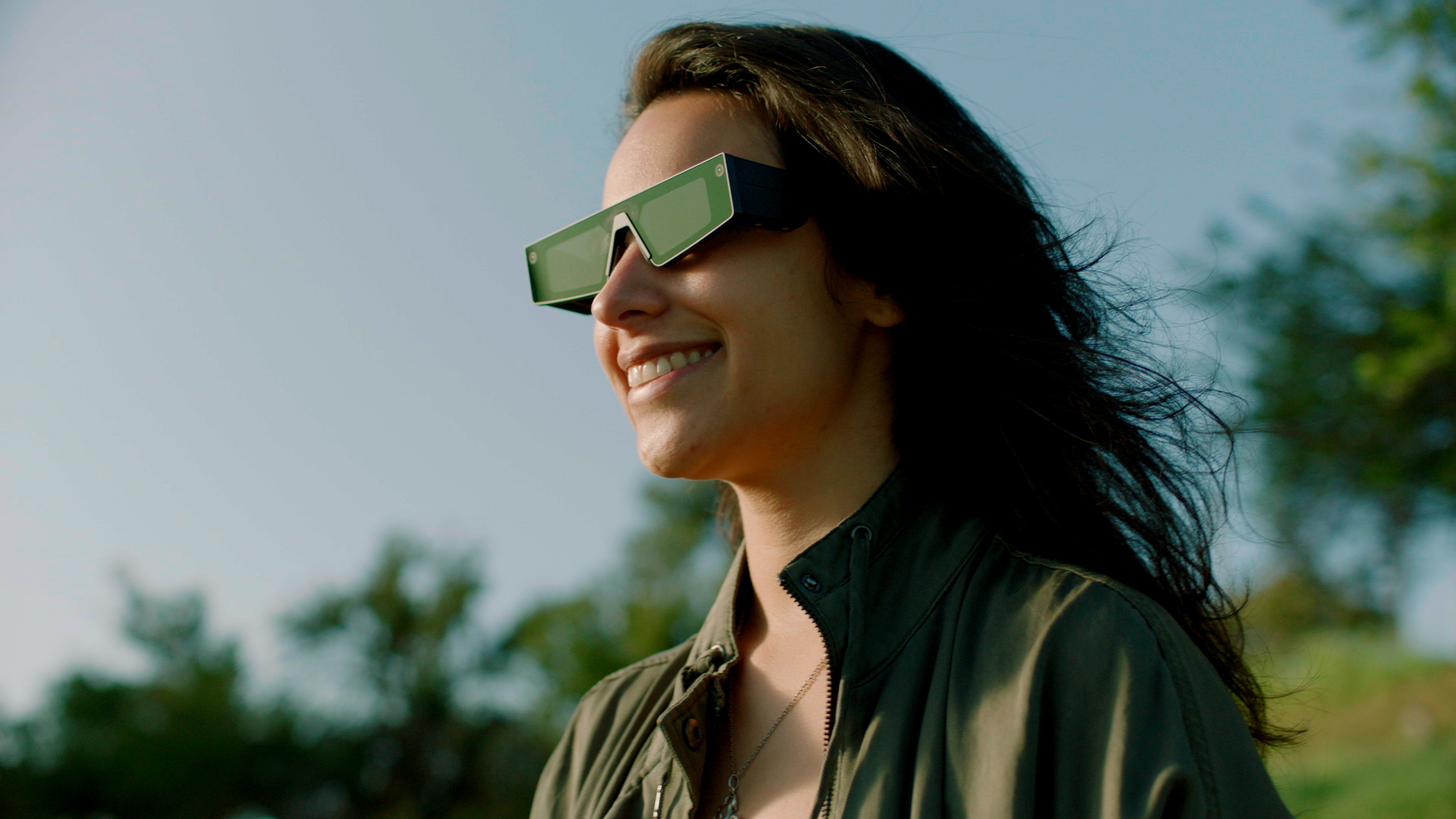The company behind Snapchat just unveiled its fifth generation Spectacles.
The first three generations of Spectacles were launched as consumer devices from 2016 to 2019 but lacked any kind of display or speakers. They functioned solely as camera glasses, similar to today’s Ray-Ban Meta glasses but without the audio out and AI capabilities.
Fourth generation Spectacles were unveiled in 2021 with waveguide displays for true AR, but were only available to select developers in very limited quantities. They were a standalone AR device in true sunglasses form factor, featuring a Qualcomm Snapdragon XR1 chipset, a tiny field of view, and an active battery life of just 30 minutes.
The new fifth generation Snap Spectacles offer a wider field of view, longer battery life, a more powerful processor, and higher transparency to allow bystanders to see the wearer’s eyes. And this time Snap will offer them to any developer for $99/month.
The field of view has been increased from just 26 degrees to now 46 degrees diagonal, slightly below HoloLens 2 and Xreal.
Spectacles now offer an angular resolution of 37 pixels per degree (PPD), similar to Apple Vision Pro. This is made possible by the use of LCoS displays, at the cost of rendering Spectacles noticeably bulkier than microLED solutions like RayNeo X2.
Spectacles also feature “automatically tinting lenses”, which Snap claims makes visuals “vibrant, indoors or outdoors — even in direct sunlight”.
Snap says the device is powered by “two Snapdragon processors from Qualcomm”, which split the compute workload across each stem, increasing performance while improving thermal dissipation. To further cool the chips, Spectacles uses titanium vapor chambers. The dual-chip solution somewhat reminds us of Snapdragon AR2, but Snap declined to tell us an exact name for what chipset it’s using, suggesting it may be a new unannounced offering from Qualcomm.
Snap claims the motion-to-photon latency of Spectacles is 13 milliseconds, close to the 12 milliseconds Apple claims for passthrough latency of Vision Pro.
The active battery life has been increased from 30 to 45 minutes, and a USB-C port at the back of one of the stems allows for extended usage via a power bank.
One area in which Spectacles have regressed though is the weight and size. The original AR Spectacles weighed 134 grams, while the new Spectacles weigh 226 grams. They’re also visibly bulkier, pushing the limits of what can be described as a true glasses form factor.


Original AR Spectacles (left) vs New AR Spectacles (right)
Snap Spectacles can’t capture first-person photos and videos outside of apps, and there’s no audio streaming “yet”, so it can’t play podcasts and music from your phone or take calls. But the AR capabilities let Spectacles do much more than basic smart glasses.
Spectacles run Snap OS, which the company claims is a “purpose-built, brand new operating system” for AR.
Spectacles has a built-in web browser which supports YouTube, or you can wirelessly mirror your phone screen to bring your mobile apps into AR.
The glasses feature hand tracking, and the main menu of Snap OS is anchored to one of your hands to be interacted with using the other. It also has on-device speech recognition for text input.

Developers build “Lenses” for Snap OS, the company’s terms for apps, using Lens Studio 5.0. Snap says developers can easily build Lenses using Spectacles Interaction Kit, and more advanced Lenses can be written using TypeScript and JavaScript. To identify, track, and augment real world objects, SnapML will let developers use custom machine learning models in their Lenses.
Additionally, developers can leverage your smartphone as a 6DoF tracked controller. And with Spectator Mode nearby smartphone users can see what you’re seeing in AR.
In future, through a partnership with OpenAI, developers will also be able to use GPT-4o API “to provide more context about what you see, say, or hear”.

LEGO has used Lens Studio to build an AR game for Spectacles called Bricktacular. “Whether you’re free building or tackling specific LEGO sets, this experience unlocks endless possibilities to challenge yourself and see how fast you can build.”
Snap says ILM Immersive, the team behind the Star Wars VR interactive stories Vader Immortal and Tales from the Galaxy’s Edge and the Marvel mixed reality interactive experience What If…?, is currently building AR Star Wars experiences “that connect you and your friends with the Star Wars Galaxy”.
Niantic is bringing a Peridot spinoff and Scaniverse to Snapchat Spectacles too.
Snap Spectacles will only be available in the US, and developers renting Spectacles need to commit to a 1-year minimum term. If they stop subscribing after that, they’ll need to send the glasses back to Snap.
The Verge reports that these Spectacles are difficult and expensive to manufacture, with “thousands of dollars” in components, and that Snap is building only on the order of 10,000. A consumer version at an affordable price is likely many years away, and we’ll keep a close eye on Snap for any signs of it.
Meta Might Demo A True AR Glasses Prototype In 2024
Meta hinted it might demo a “prohibitively expensive” true AR glasses prototype in 2024. “In the domain of consumer electronics, it might be the most advanced thing that we’ve ever produced as a species.”

Snap’s reveal comes just a week before Meta is expected to show off its own AR glasses. But Meta’s glasses are reportedly even more expensive and hard to manufacture, achieving a wider field of view, and the company won’t even sell them to developers.
You can read our hands-on impressions of Snap’s new AR Spectacles here:
Hands-On With AR Peridot On Snap Spectacles
Hands-on impressions: Niantic’s Peridot is a standout example of what Snap’s new AR Spectacles can do.


